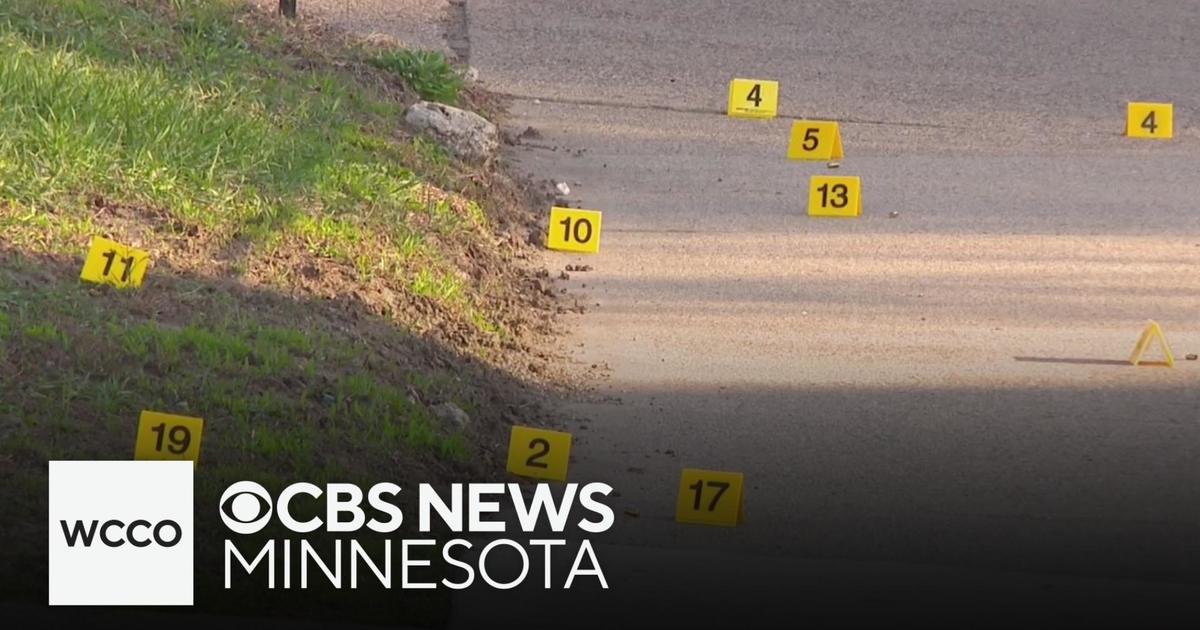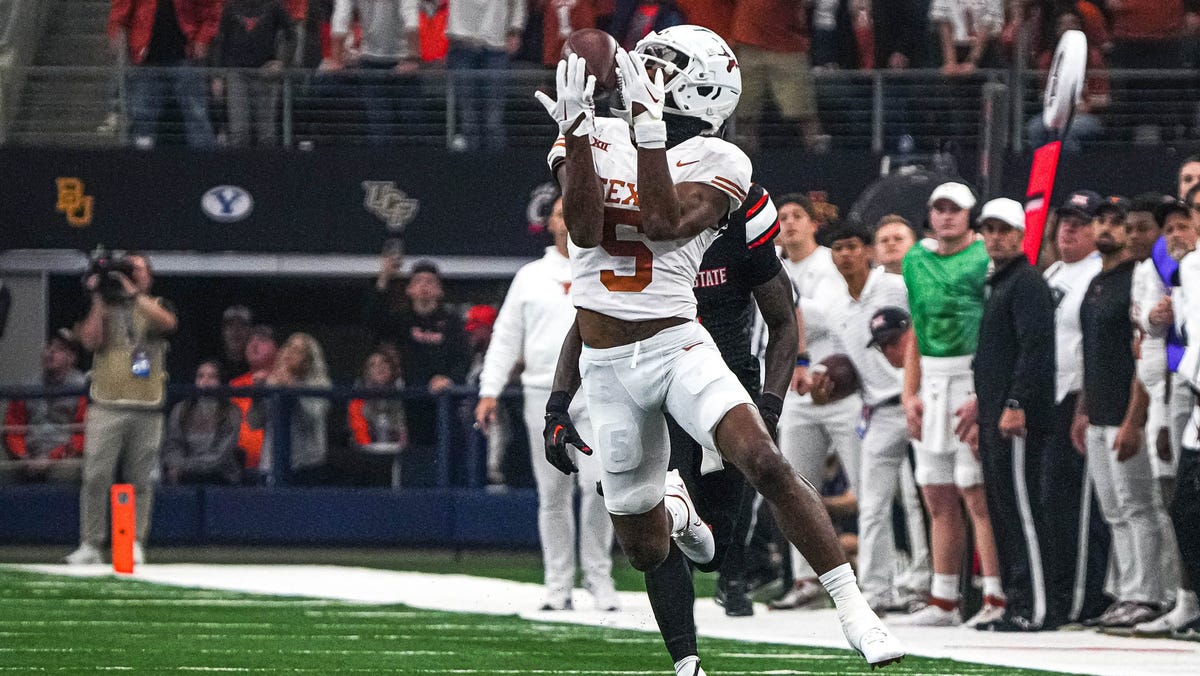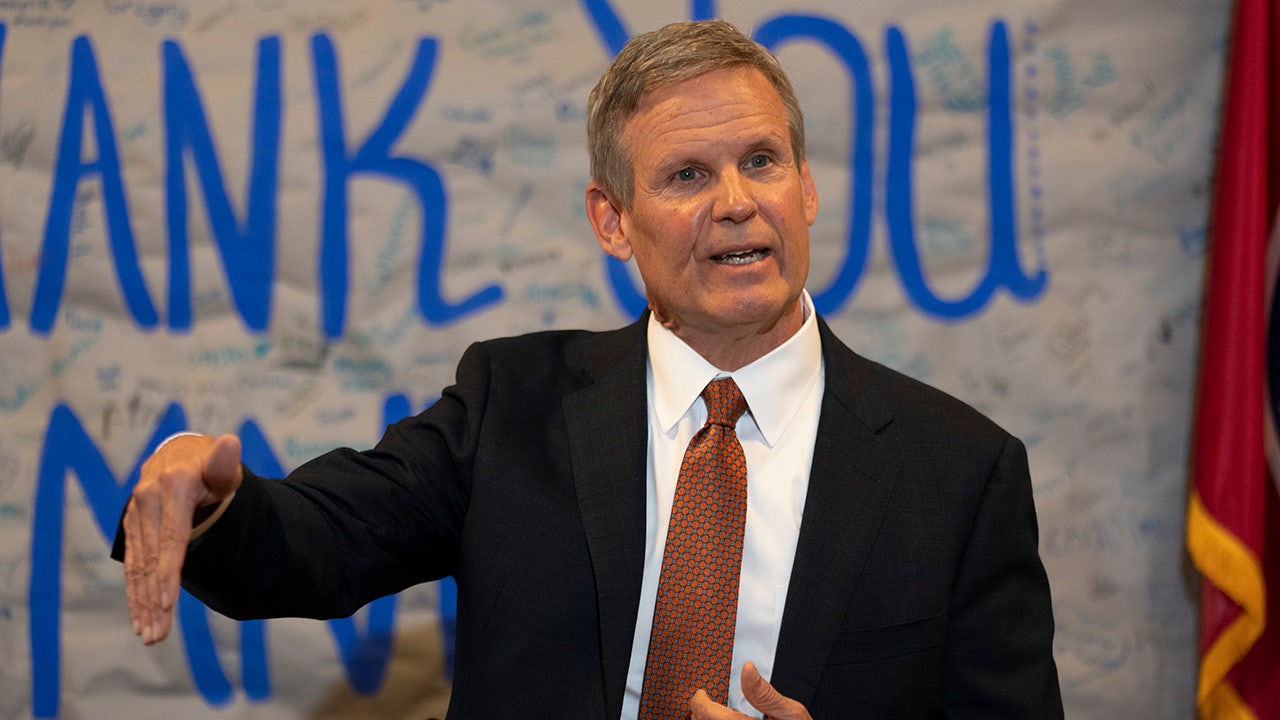Entertainment
Camila Mendes wants more films about the Brazilian American experience, so she produced one
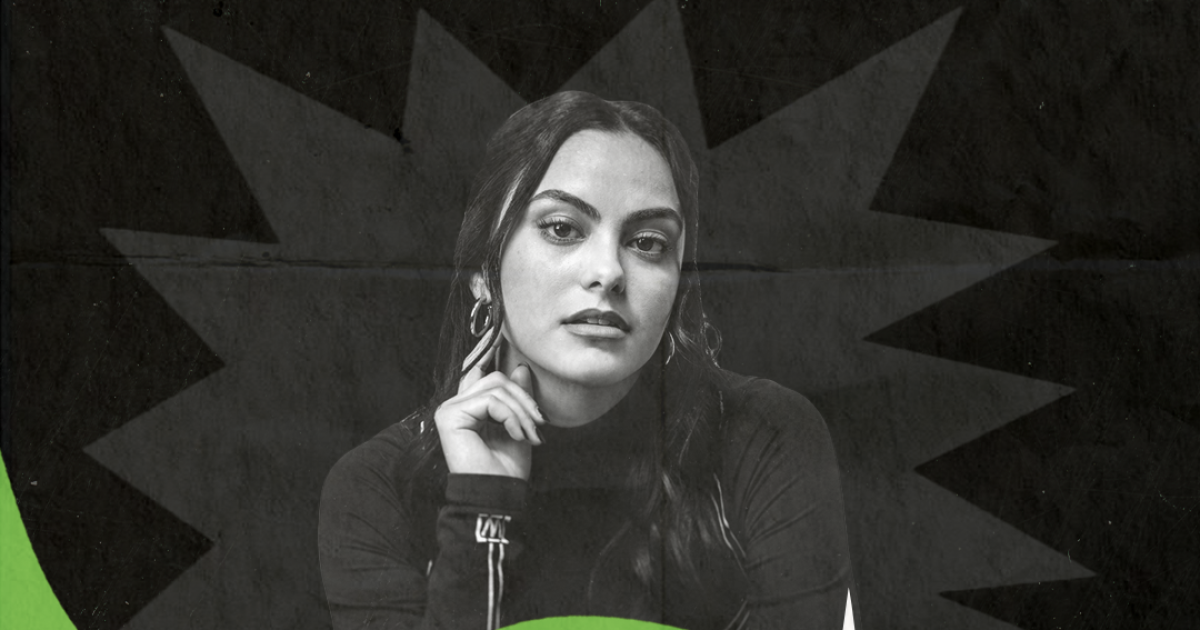
Since booking her breakout role in The CW drama “Riverdale” in 2017, Camila Mendes has skyrocketed to fame as one the most prominent Brazilian American stars in Hollywood. Yet, despite building on her success with acclaimed projects such as Netflix’s “Do Revenge” and Hulu’s “Palm Springs,” the actor says she has yet to receive a single script calling for a Brazilian role. “I get asked to play everything under the sun, every different kind of Latina, except Brazilian,” she says.
That’s what drew her to her latest project, “Música,” a coming-of-age musical rom-com directed by and starring Rudy Mancuso that premiered this week at the South by Southwest Film and TV Festival. “Música” tells the story of Rudy, an aspiring artist trying to navigate his future as he’s pulled in different directions by his overbearing mother (Maria Mancuso), his girlfriend Haley (Francesca Reale) and his new crush, Isabella (Mendes). It’s a charming, unorthodox musical that doesn’t feature traditional musical numbers. Instead, drawing on Rudy’s synesthesia, the film bursts to life in sequences where the surrounding environment — a nearby basketball game, kids playing jump rope, a lively game of checkers at the park — all become part of a symphony.
Mendes was hesitant about the project at first — Mancuso was a first-time director, and he had initially risen to fame on YouTube and Vine. But, her reservations melted away when she spoke with Mancuso and learned how passionate he was about getting the film made, as well as his desire to expose more audiences to the Brazilian American experience. “Deep down, I think I always knew I was going to take the role,” she says. “How could I say no to this opportunity?”
The film’s on-screen love story evolved into a real one off-screen, with Mancuso and Mendes celebrating their one-year anniversary last July. “Música” will be available to stream on Prime Video on April 4.
“Música” is the second rom-com you’ve starred in and produced this year. Is that something you want to do more of?
The rom-com thing is completely coincidental. [Laughs] It’s funny, because I know that “Música” is technically a rom-com, but to me, it didn’t feel like any rom-com I’d seen before, so I never categorized it that way in my head.
When you hear “musical,” I’m sure a lot of people start imagining structured song and dance numbers, which is very different from what we see in “Música.” What convinced you to sign on?
Rudy’s team sent me the script with a kind of sizzle reel — basically a short version of the opening scene — just to give an example of the vision. It would say in the action “It breaks into a musical number with people banging on pots and pans,” but you don’t know what that actually looks like without an example. That got me excited, but also, I was skeptical. I didn’t know much about Rudy. I just knew that he was a Viner, so I had my own preconceived notions of what that meant, and I was also just in my head about my career choices at the time. But I decided to meet with him because I wanted to meet a fellow Brazilian in the industry, and he was obviously very talented. When I met with him, I was floored. I knew I needed to work with him, but I also knew I had to produce this. It was the only way I would sign on, because I had notes about my character, Isabella.
What stood out to you that you wanted to change?
Well, I really wanted to develop not just my character, but the other female role, Haley. I wanted to make sure they felt fully realized and complete. Rudy was like, “Absolutely, that’s part of the reason we want you on board.” So over the course of a few months, I would Zoom with him to work on scenes and dialogue and make sure, especially for Haley’s role, that she wasn’t just the rich white girl, that we weren’t making their dynamic so binary. Then obviously, we personalized my role and gave her a little bit more of a backstory.
Why was creating that backstory important to you?
With love stories, you really need to understand the conflict. What is it about Isabella that interests him, and what is it about him that triggers Isabella? I wanted her to be authentic, so what ended up happening was that I brought some of my own struggles to the role in order to kind of find her as a character.
Beyond you and Isabella sharing the same Brazilian American background, what were some of those personal elements that bled into the character?
I mean, it’s exaggerated and not necessarily a mirror of what my upbringing was like, but a little bit of her backstory. I can say this now because we’ve talked about it and we have a great relationship, but when I was finishing up high school, my mother moved back to Brazil to live with a guy she was seeing. My parents were divorced and I went to move in with my dad. During that time, I remember having gone through my first heartbreak as a kid and really wishing my mother was there. I remember as a teenager that absence and that feeling of abandonment. I thought that was a good thing to incorporate into Isabella’s character because you have Rudy’s character who’s so annoyed by his mother’s love and overwhelmed with how involved she is in his life. I think it’s nice to have a character like Isabella who’s like, “Actually, I wish my mom was more involved in my life.” I just took that one little thing from way back in the day and kind of pulled from that so that I had an avenue into her character and her pain.
How did it impact you finally getting to play a character who spoke to some of your experiences?
I think story-wise, the emphasis on family in Brazilian culture is something that I’ve really grown to embrace more. Especially now dating a Brazilian, it’s opened me up to that perspective of really putting more of an effort and to stay close to family to see them more. Obviously, being in Hollywood for so long, you can get so career focused and make everything about success. But the older you get, the more you realize that’s really not what matters. I want to be able to look back on my life and feel like I created strong relationships with the people that I love. And I think this movie has a really strong message with that.
This is the second project out this year that you’ve worked on as an actor and a producer, what motivated you to step into that role?
I think producing for me was a way to make sure that I was protected. Especially coming from a teen show, I’m so cautious with who I work with and I want to make sure that they’re going to represent me well. That’s a big fear that I have, because when you’re on a show, you work with a new director every episode and you have very little control of the outcome. You might watch an episode and see that they cut it in a certain way and now you look like a bad actor. You feel like you’re being misrepresented. So for me, my avenue into producing was trying to take control and having creative authority and protecting myself. That’s evolved to be a deeper passion and love for the art of producing as a whole but that’s definitely how it started.
As a producer, you have a whole new layer of interest vested into this story than you did as an actor. What do you hope people take away from their experience watching “Música?”
From a personal standpoint, I’m very excited for people to see what Rudy is capable of. I know that there’s such a stigma around being an internet personality and having your talent undermined. So I’m just so excited for people to see just how creative and visionary he is.
But I’m also excited for people to get a glance into Brazilian culture, because there’s truly no movies representing Brazilian culture right now. And there’s something even more nuanced about “Música” in the sense that it’s Brazilian American, which I think is accessible to a lot of children of immigrants. You don’t have to just be Brazilian to relate to the story. Anybody who feels the duality of being an immigrant child, having one culture passed down to them but living an entirely different one, knows that clash of ideologies can be so difficult to navigate. Seeing Rudy navigate those dualities was refreshing because I’m navigating the same one. It’s been really great to have somebody who understands my experience, so I hope that there are people watching this movie that will also relate and feel seen.
Was part of your motivation for getting into producing wanting to expand Brazilian representation in the industry?
Oh, absolutely. I just don’t think there are enough people behind the camera creating that platform, so I just feel very lucky that I get to be part of the beginning of it. I kept telling Rudy, Brazilians need to have their “Crazy Rich Asians” moment, where resilience can finally feel seen.
How do you hope “Música” plays a role in expanding people’s awareness of Brazilian culture and the Brazilian American experience?
On a very, very microscopic level, I think it would be great if it helped people learn that Brazilians speak Portuguese. [Laughs] That would be a big win for us. But also, Brazilian culture is so beautiful, and it’s never showcased in a romantic way. I think a lot of people’s exposure to Brazil in film is like “City of God”-type violence. That is part of the Brazilian story, but it’s just one aspect. There’s this whole other side to it that isn’t really celebrated in film. I’m excited for people to hopefully recognize that.

Movie Reviews
Ghostbusters: Frozen Empire Movie Review: An underwhelming nostalgia bait

It is often said that the primary objective of franchise films is to evoke nostalgia in the viewers. These films serve as a reminder of the time when we first met the characters, a time when we had fun and didn’t have the adult perspective to overanalyse filmmaking style. An ideal scenario in such cases, is a sequel that takes a new approach while still retaining the warmth of the original film, thereby providing you with a refreshing yet nostalgic experience. However, Ghostbusters: Frozen Empire, the latest addition to the Ghostbusters franchise, fails to deliver in terms of novelty, instead relying solely on nostalgia.
Director: Gil Kenan
Cast: Paul Rudd, Carrie Coon, Finn Wolfhard, Mckenna Grace, Kumail Nanjiani
This fifth addition to the supernatural comedy franchise takes place three years after the events of Ghostbusters: Afterlife. The Spenglers, including Egon Spengler’s daughter Callie Spengler (Carrie Coon), her boyfriend, Gary Grooberson(Paul Rudd), her children Trevor (Finn Wolfhard) and Phoebe( Mckenna Grace), and their close friends Lucky Domingo and Podcast, move to New York City to assist Winston Zeddemore (Ernie Hudson) and Ray Stantz (Dan Aykroyd ) in reestablishing the paranormal investigation group known as Ghostbusters.
Entertainment
The differences — and similarities — between the Coachella and Stagecoach festivals

After back-to-back weekends of the Coachella Valley Music and Arts Festival, with performances from a reunited No Doubt, Tyler, the Creator, Lana Del Rey and Doja Cat (complete with an entourage of sexy Yetis), sister event the Stagecoach Country Music Festival has rolled into Indio’s Empire Polo Club.
Stagecoach, which will feature performances by Eric Church, Miranda Lambert, Morgan Wallen, Willie Nelson, Post Malone, Dwight Yoakam and others, has grown in popularity since it started in 2007. This year it sold out well in advance of the fest.
So if you’re wondering how Southern California’s two largest music festivals, compare, here’s a primer.
The music
While the lineups are vastly different, there is one artist who is spending three consecutive weekends in Indio: Carin León. The regional Mexican music star attracted crowds at Coachella’s twin weekends. (León joins a small club of artists who have played both fests, including fellow Stagecoach 2024 performers Willie Nelson, Trampled by Turtles and Post Malone, but it’s even more rare to play both fests in the same year, as Nelson has.)
While Coachella is known for plenty of pulsing EDM beats, that has begun to transfer over to Stagecoach in recent years, with Diplo’s name now branding the indoor Honkytonk dance tent that started out as a place for traditional line dancing.
The grounds
The Stagecoach footprint is noticeably smaller than Coachella’s. The VIP rose garden is not part of the fest, nor is the hulking Sahara Tent, although it can be seen in the distance.
The Mane Stage is set up 90 degrees clockwise from where Coachella’s largest stage was, but at Stagecoach there are fewer stages overall. Stagecoach‘s largest music spaces are the Mane, Palomino (Coachella’s Mojave Tent) and Diplo’s Honkytonk (Coachella’s Yuma Tent). The air-conditioned Sonora Tent has been transformed into the Bud Light Backyard, with performances throughout the weekend, but it’s not a full slate of music like it was at Coachella. Some stars who are playing early on the Mane stage, including Josh Ross, Kylie Morgan and The War and Treaty, will perform a second set at the Bud Light Backyard during the weekend. The Stagecoach-exclusive Toyota Music Den features up-and-coming artists such as Shaylen and RVSHVD.
Coachella’s Gobi Tent has been turned into the Yellowstone Dutton Ranch with meet-and-greets with cast members of “Yellowstone” and “1923” and a merch collaboration between Yellowstone and Stagecoach.
Stagecoach also has VIP seated and standing sections, with the general admission fans being further out on the field for the Mane stage, and fans can bring in lawn chairs, which is a no-no for Coachella. The other stages are like Coachella with first-come, first-to-get-close-to-the-stage access.
Coachella’s craft-beer barn area has been renamed for the Mayor of Flavortown himself, Guy Fieri, and the food stalls from the last two weekends have been replaced with a large RV and area for Fieri and friends’ cooking demos all weekend long. Perhaps the best detail of the area: a smoker with Flavortown branding that has a metal sculpture of a bull’s head with red eyes.
Both festivals offer the standards of pizza and chicken tenders, but many of the L.A. restaurants that were at Coachella both weekends have decamped. While you can find some plant-based options, they aren’t as plentiful as at Coachella, while Stagecoach easily has the better barbecue game.
Outside of the main festival grounds, Stagecoach allows RV camping and you can only access the campgrounds if you are camping.
There’s also a space at Stagecoach for demonstrations with the Compton Cowboys.
Oh, and that lush green grass you saw on everyone’s Instagram during Coachella? It’s mostly gone now.
The art
While the rainbow Spectra tower is a permanent installation on the grounds at this point, most of the large installation art that created the landscape of Coachella is gone.
However, not far from Spectra is Mismo, an art installation of colorful paisley teardrop sculptures by Sofia Enriquez that was originally part of the program at Coachella 2019.
Stagecoach also has a couple of pieces of large country-themed art, including a horse sculpture and a cowboy boot.
The Ferris wheel is not quite art but definitely a landmark, and it remains in the same spot for both fests.
The stuff
Stagecoach is full of free stuff. If you have T-Mobile you can get a free lawn chair at their activation. The Bud Light Backyard let fans pick up a custom koozie with a choice of four designs. There are also free goodies at the Toyota Music den, including the favorite Stagecoach bandanna.
At Coachella, there were Neutrogena sunscreen kiosks where you could lather on some free sunblock.
The style
Cowboy hats, boots and fringe were favorite fashion choices at both fests in 2024, but the wild and colorful fashionistas of Coachella aren’t posing around the field at Stagecoach. There is, however, much more plaid, and gear covered in American flag prints.
Mullets are definitely back, with Peso Pluma’s Edgar style the most prominent at Coachella. At Stagecoach, you see some young people with mullets but you still occasionally spot someone who has been rocking the style since the early ’90s.
The one accessory that you will see at both? Bandannas, not just for fashion but a must to try to stave off the festival cough with the gusty winds blowing dust around the site. That’s a souvenir nobody wants to take back with them.
Movie Reviews
Film Review: Eye for an Eye 2 (2024) by Yang Bing Jia
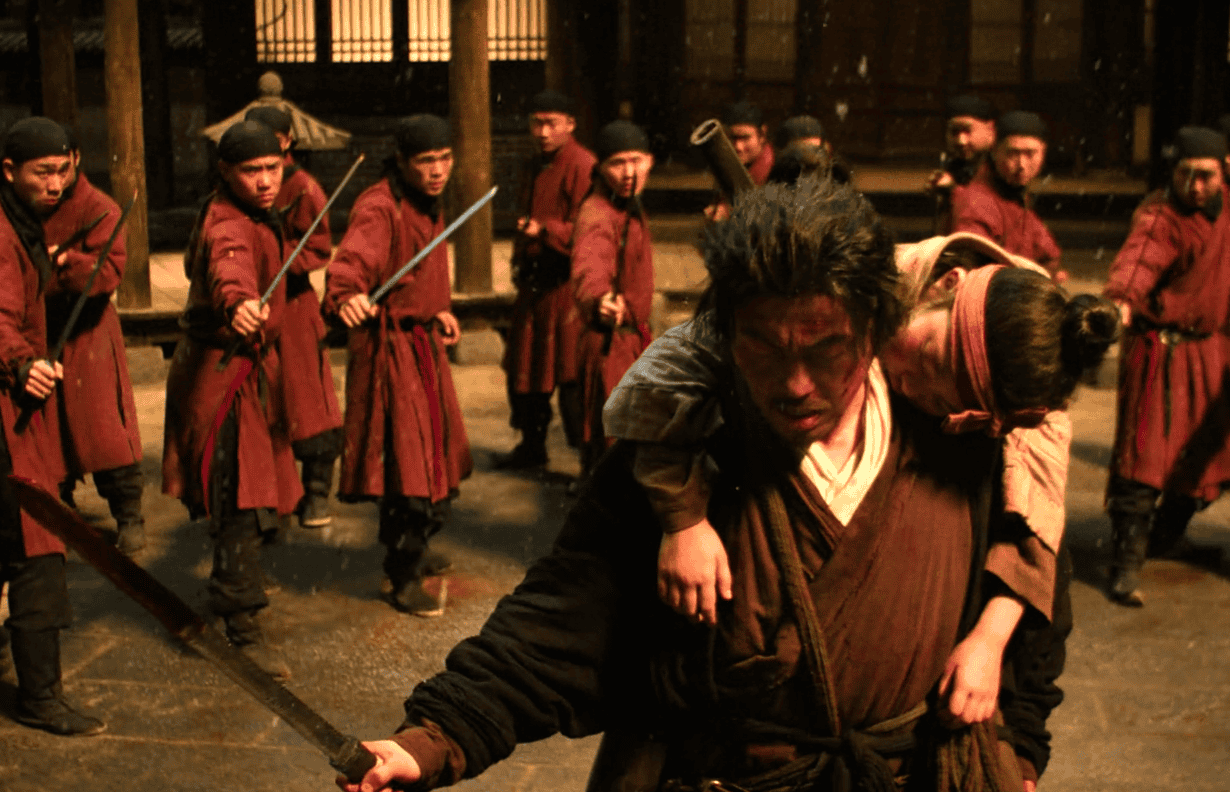
“A blind man, a kid. You claim to be bounty hunters. Right?”
A surprise hit after its release on various streaming platforms, director and writer Yang’s short online wuxia film “Eye for an Eye: The Blind Swordsman” (2023) starring Xie Miao as the protagonist went on to generate a fair amount of attention both in Mainland China and overseas. Therefore it is inevitable that a sequel soon follows with both Yang and Xie returning. Though scheduled for a wilder cinema release, the much anticipated and a longer follow-up still ended up streaming on iQIYI.
This second installment kicks off in Youzhou during the Tang Dynasty. Believing that five fugitives are hiding in a gambling den, blind swordsman Cheng Xia Zi shows up to arrest them. Naturally, they try to fight their way out but of course they are no match for the lethal bounty hunter. Apparently, Cheng is trying to make as much money as possible so he can retire in Chang An, his old hometown.
Meanwhile, in another part of town, a pair of homeless orphans, Zhang Xiao Yu and her little brother Xiao Cao, are stealing food and are caught up in a confrontation between ruthless officer Li Jiu Lang and his rebels. The merciless Li kills the defenseless rebels, Zhang manages to escape but her brother is not that lucky. While on the run, she accidentally bumps into the grumpy Cheng who reluctantly shelters her. After a while, they start to bond and eventually work as a team to bring the cold-blooded Li and his little empire down.
Yang’s sequel plays like a proper wuxia film probably because of its longer running time which allows him to further develop the main lead characters and the dramatic elements. A subplot that concentrates on the orphan Zhang Xiao Yu, played by Yang En You, a traumatized little girl who is obsessed with revenge after the tragic death of her brother. The bond between her and Blind Cheng which takes on centerstage is engaging and not rushed. However, it seems like director Yang is doing a Zatoichi style adventure with a bit of Lone Wolf and Cub thrown in for good measure at times.
Visually the film looks great, especially the outdoor location of rolling hills, forests and mountain ranges. Besides, the detailed town buildings plus their interiors all look lived in and authentic. The fast and crisp fight sequences designed by action choreographers Qin Peng Fei and Du Xiao Hui are impressive, though quite brutal. Also, the fight which features a thug wielding a pair of flaming sword looks interesting and fun, but it is borrowed from Su Chao Pin and John Woo’s “Reign of Assassins” (2010). Though epic, the end fight between Cheng and three hundred guards seems too far fetched and rushed. However, Yang’s use of split screens during the film’s lighter moments is refreshing.
Actor and martial arts champion Xia Miao, born in Beijing, is no stranger to Asian action films who appears in more than thirty films and TV series. He started his film career as a child actor alongside Jet Li in “The New Legend of Shaolin” (1994) and again in “My Father is a Hero” (1995), these films gained him a reputation both overseas and locally. After that he takes a break to study and then makes a comeback in the TV series “Legend of the Shaolin Temple” (2006) and “The Kung Fu Master” (2010). Xia Miao’s portrayal of the blind bounty hunter Cheng is impressive and his moves are equally smooth and convincing during the many fight sequences.
The introduction of a second lead character, the vengeful child, Zhang Xiao Yu (Yang En You) is a nice touch. Child star Yang is impressive and shines as the orphan Zhang, as she effortlessly tackles the emotional and dramatic moments of the film. In addition, her interchange-like bickering and the playful moments with swordsman Cheng are interesting to watch and a nice distraction from the otherwise violent fight scenes, besides adding the much needed emotional connection. Furthermore, Hung Tao is adequately evil and memorable playing the cruel officer Li Jiu Lang.
Even though the storyline of “Eye for an Eye 2” is predictable and familiar, it is still impressive and satisfying production. Besides, the well written lead characters are a plus, and when topped off with the well choregraphed action and engaging visuals, it all makes for a balanced sequel.
-

 Movie Reviews1 week ago
Movie Reviews1 week agoMovie Review: The American Society of Magical Negroes
-

 World1 week ago
World1 week agoIf not Ursula, then who? Seven in the wings for Commission top job
-

 Kentucky1 week ago
Kentucky1 week agoKentucky first lady visits Fort Knox schools in honor of Month of the Military Child
-

 World1 week ago
World1 week ago'You are a criminal!' Heckler blasts von der Leyen's stance on Israel
-

 Movie Reviews1 week ago
Movie Reviews1 week agoPon Ondru Kanden Movie Review: This vanilla rom-com wastes a good premise with hasty execution
-

 Politics1 week ago
Politics1 week agoTrump trial: Jury selection to resume in New York City for 3rd day in former president's trial
-

 News1 week ago
News1 week agoHouse passes bill requiring warrant to purchase data from third parties
-
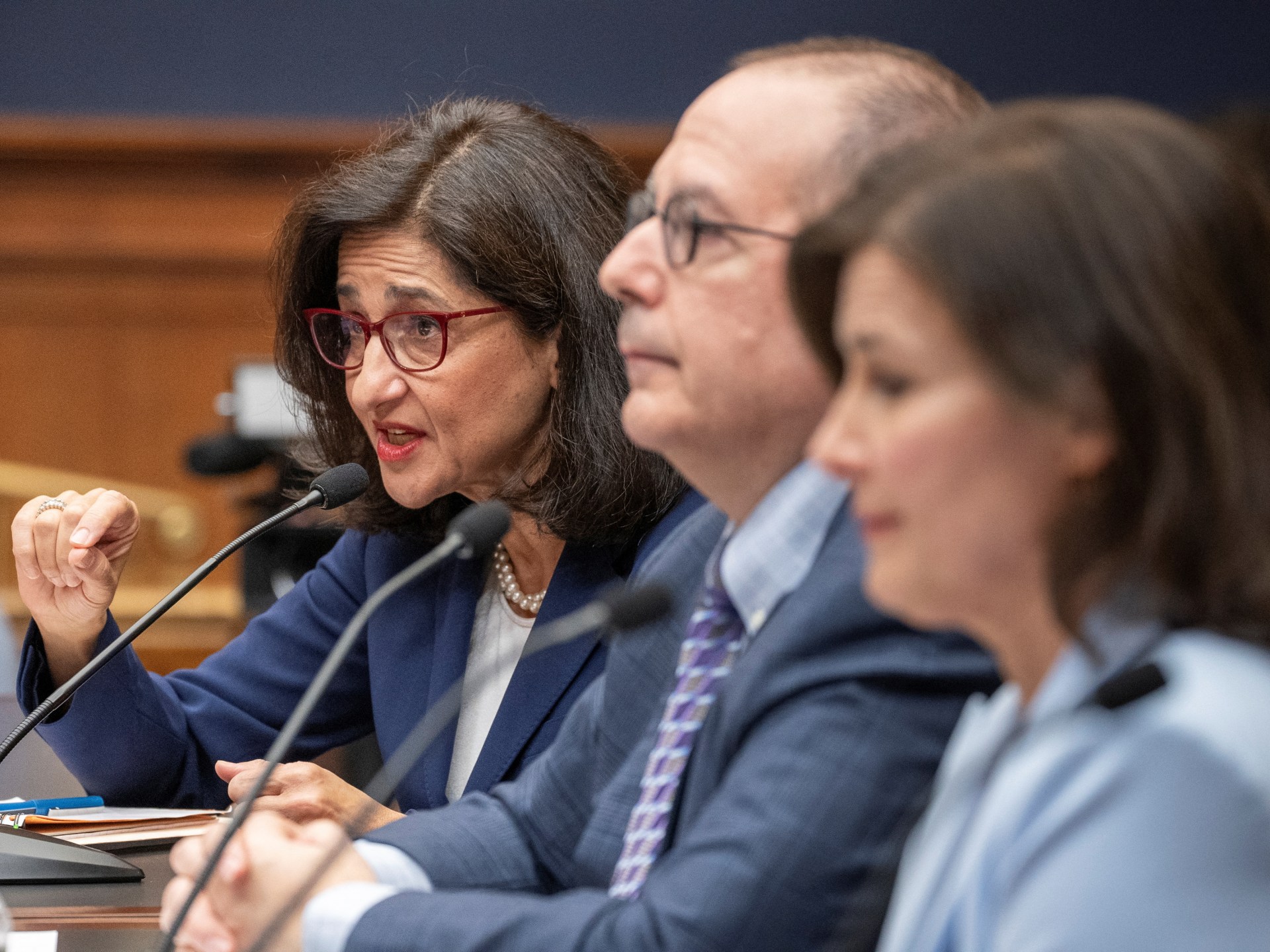
 World1 week ago
World1 week agoColumbia University leaders face scrutiny over anti-Semitism on campus


